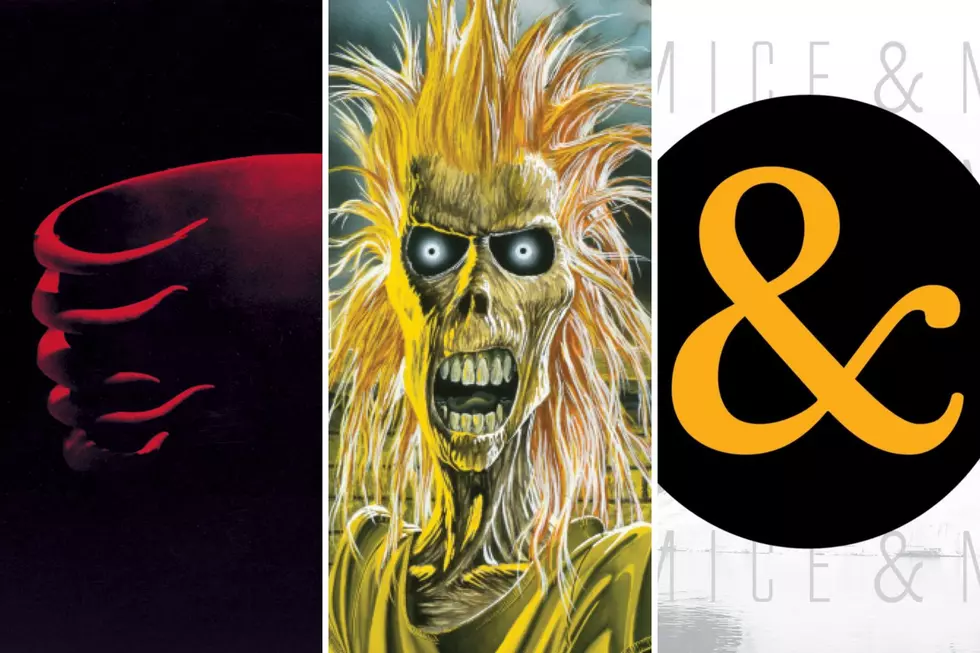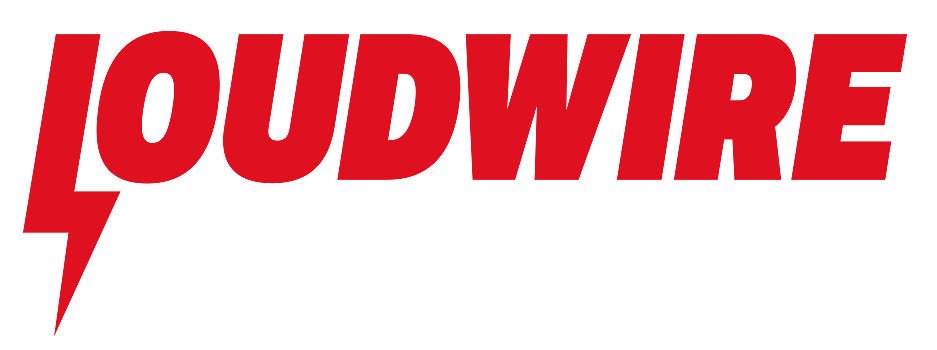
45 Years Ago: Judas Priest Further Define Heavy Metal on ‘Stained Class’
In 1978, heavy music was at a critical junction. The bands who lit the hard rock torch in the late ‘60s and kept it burning over the next few years were fading or gone. Deep Purple had broken up. Black Sabbath had just one album left with Ozzy Osbourne; their best days were further and further in their rear view mirror. Even the mighty Led Zeppelin had just one LP left in the tank, and In Through The Out Door hardly compared to what had come before. Meanwhile, disco’s feckless beats and finger-pointing dance moves threatened to overtake rock, and punk rock's "year zero" mentality threatened to make older rock bands -- particularly bands with virtuoso players and singers -- obsolete.
And then, on February 10, Judas Priest released Stained Class, raising the studded black leather banner that they’ve defiantly waved for over four decades since.
In the canon of heavy metal, Black Sabbath's self-titled debut from 1970 is generally referred to as the genre's first album (with records by Zeppelin, Purple, Jimi Hendrix, Cream, The Yardbirds, The Who, The Kinks, Blue Cheer and others serving as precursors). But if 1970's Black Sabbath marks metal's birth, Priest's fourth album, Stained Class, is when it got its drivers license. Getting your first wheels is when you really start to pull away from your parents; it's when you start to learn what you like, what you don't, and what you stand for. It's when you start to establish your own identity.
Rocka Rolla, Priest’s 1974 debut, hinted at their future, but it is a psych-tinged rock record — a solid one. 1976's Sad Wings of Destiny and 1977's Sin After Sin came next, implementing sounds that would later serve as metal’s hallmarks, but dust those albums off (once a year, at least!) and the fingerprints of blues-based rock are everywhere. But Priest’s songwriting chops were becoming more cohesive, their guitar attack stronger and crucially, Rob Halford was still exploring the outer reaches of his vocal range.
On Stained Class, Priest started to establish their identity, socially and visually. And heavy metal followed in their wake. Until this point, Judas Priest didn't look much different than Zeppelin or Purple. Now, they were starting to replace their denim with leather, for a meaner, harsher look. Their former and little-remembered logo in a gothic font was now replaced by their more angular iconic logo. The lyrics got darker, and the band were moving further away from the blues influences of all their predecessors. The twin lead guitars of Glenn Tipton and K.K. Downing, Rob Halford's siren-like wail and the breakneck-speed drumming by their newest member, Les Binks, were carving metal's future.
Stained Class, its LP jacket sporting an artsy cover and a newly-unveiled and now iconic logo, is where five alchemists — Halford, Tipton, Downing, bassist Ian Hill, and Binks — transformed Judas Priest’s retooled brand of hard rock into pure heavy metal. “Stand by for exciter” indeed!
Binks, whose forceful work galvanizes this sound with a cavalcade of double kicks and manic fills, introduced himself and the album in the first five seconds of opening track, “Exciter.” Regarded by many as the first speed metal song. "Exciter" sows the seeds of future thrash metal — and this was in 1978, one year before Lemmy, Fast Eddie Clarke and Philthy Animal Taylor would pummel the world with Motorhead’s eardrum-threatening Overkill and Bomber.
Judas Priest, "Exciter"
“Beyond the Realms of Death,” a spellbinding composition, is perfect. Binks, a drummer who could also play guitar, got a writing credit for this one, authoring the hypnotic acoustic opening, making this a full five-man effort. Whimsical passages hover on the gentle, crooning breath of Rob Halford, whose voice breaks free in stride with the song’s character’s painful relationship with life.
The chorus’ lead-footed, sledgehammer rhythms and the shriek of a Metal God level the ethereal mood, later powered forward on the treads of Binks’ steady bed of kicks. Passionate, thrill-seeking solos careen upward on the wings of sustained swells of guitar and Ian Hill’s four string tremors. With more polar musical energies at play, “Beyond the Realms of Death” builds to a climactic ending with Binks giving his drum kit a beatdown and a final piercing falsetto trailing off into the ether as the song fades out.
Lyrically, this represents the darkest moment of Stained Class, though competition wasn’t sparse. There’s not a trace of optimism to be found, swiftly bringing the axe down on the necks of the flower children and their futile dreams of utopia and a hand-holding world. Hailing from Birmingham, an industrial English city, life wasn't viewed through rose-colored glasses — there were no "girls with kaleidoscope eyes" — and the memories of smoldering remains from constant bombings in World War II still loomed.
For all of metal’s to-do with religion, Priest take the middle ground on "Saints in Hell," questioning the nobility of a higher power that would leave a martyr to endure a "second Hell" as a brutal execution is carried out. Meanwhile, they take a grim look at society for treating public displays of violence as entertainment. "Saints in Hell" is a menacing track -- and one of the band's most underrated -- armed with one of Halford’s most daunting vocal performances ever.
Despite the morose subject matter present on Stained Class, it was the cover of Spooky Tooth’s “Better By You, Better Than Me” that ultimately drew the most controversy. In 1990, Judas Priest were blamed for “backmasking” a subliminal message within the song that allegedly said “do it,” which a civil suit claimed was the reason James Vance and Ray Belknap made a suicide pact together. Belknap succeeded in killing himself, but Vance, who shot himself in the face, was left critically wounded and died three years after the tragic 1985 incident. The case, however, was eventually dismissed.
Judas Priest, "Better By You, Better Than Me" (Spooky Tooth cover)
Inexplicably, Stained Class looms as a sort of hidden gem in the Priest discography. Its worth isn't lost among the diehards who hail it as a near-indomitable classic, but it generally gets lost among the wave of metal lynchpins that came next like British Steel, Screaming for Vengeance and Defenders of the Faith.
The production, which saps the crunch and power to metal’s most formidable guitar duo, even manages to make Halford sound too powerful for the material at times. It’s one we all wish had a different producer; Dennis MacKay's experience was mostly with jazz/fusion acts like Curved Air, Brand X and Mahavishnu Orchestra. If, say, Martin Birch (who had worked with Deep Purple and Rainbow, and later, Iron Maiden) had manned the boards, this record may have been better served.
And unfortunately, there’s not many live representations of these songs to offer an alternative to the studio cuts. “Beyond the Realms of Death” has endured as one of Priest’s most-performed tracks, but most of the others have never been played live, and others just a handful of times while some, like “Saints in Hell,” have criminally never entered the live arena.
In 1970, Black Sabbath provided the essential tools for playing heavy metal, rubbing the sticks together that would spark the fire that begat the genre. Eight years later, Judas Priest, with their Stained Class bellow, breathed new life into that fire.
And just a few months later, Hell Bent for Leather would complete Priest's, and to a greater extent, Rob Halford’s, metal package, thrusting a defiant, bold image of studs, leather and chains upon the genre’s faithful defenders and, together, these records created a prototype that influenced nearly everything that came next: Iron Maiden, Metallica, Slayer, Testament, Pantera, Sepultura and legions of others.
"Fetch the scream eagles, unleash the wild cats,
Set loose the king cobras and blood sucking bats."
Judas Priest Albums Ranked
More From Loudwire









